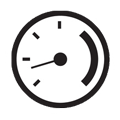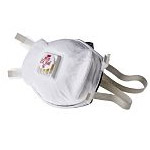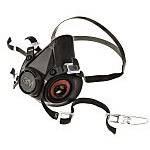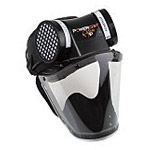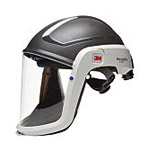Respiratory Protective Equipment
Select from our wide range of major brands
Downloads
Associated Products
Introduction
National health and safety regulations commonly set out the requirements for minimising hazardous risks in the workplace.
RPE should ONLY be used where ALL attempts have been made to remove or reduce the levels of hazard, for example by installing extraction equipment, or by putting up physical barriers before even considering the use of RPE.
Sections in this guide
Step-by-step guide to providing protection

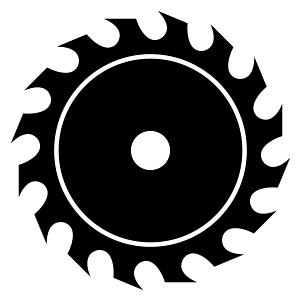
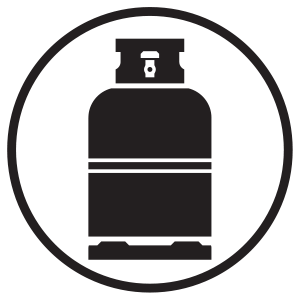
Identify the hazards.
At a high level, there are three types of respiratory hazard:
Particulate Hazards: e.g mists, fumes, dusts of fibres.
Gas and Vapour Hazards: e.g. solvent vapours are acidic gases.
Oxygen Deficient Atmospheres: e.g often found in confined spaces and/or where oxygen is consumed by materials or combustion.
-
You need to understand the types of hazards that your workers encounter before you can make a decision on suitable RPE for the work enviroment.
Consider the type of work that is undertaken and identify:
-
Process Generated Hazards e.g dust from sanding wood or gases released in a reaction. Some work activities, such as heating or cutting materials, could generate harmful substances which contaminate the air in the form of mists, dusts, fumes or gases.
-
Bought-in Hazards e.g. bottled gases, solvants or chemicals.
Any product that is classed as 'Dangerous for Supply' will come with a Material Safety Data Sheet (MSMDS) or Safety Data Sheet (SDS) which should provide infomation on:
- health hazards (on product labeling)
- forms of the sunstances contained in the product
- the type of RPE required for its use
-


Assess the Risk
Check the Material Safety Data Sheet (MSDS) of bought-in hazards - does it provide guidance on the required APF?
Does the substance have a prescribed Occupational Exposure Limit (OEL)? If there is no advice on the required APF in the MSDS, you can calculate the required protection level using the OEL and quantity of substance in the air.
If there is more than one hazard present, e.g. dust and gas, you will need to find out the protection factor for each and choose appropriate RPE based on the highest protection factor required.
Make sure the RPE you select is adequate to protect your workers against any harmful substances in the air around them. To do this you need to understand the amount in the air and the form it takes (e.g. vapour or particles), to effectively assess the concentration of the hazard.
There are various types of respirator and breathing apparatus available and the protection they offer depends on a number of things, including the protection factor. To help you, each type and class of RPE is categorised by a protection factor which takes the form of either a Nominal Protection Factor (NPF) or an Assigned Protection Factor (APF).
Things to check
Provide Approved RPE/PPE
 Disposable Respirators Disposable Respirators |
 Reusable Respirators Reusable Respirators |
 Powered Respirators Powered Respirators |
 Air-fed Respirators Air-fed Respirators |
|---|---|---|---|
|
In general, disposable respirators only protect the wearer from particulate hazards. Features of disposable respiratory products:
Benefits of using disposable respirators:
|
Available in full and half-mask options, reusable respirators protect the wearer from particulate and/or gas and vapour hazards depending on the filter type selected. Features of reusable respiratory products:
Benefits of using reusable respirators:
|
One of the main benefits of using powered (or supplied air) over disposable or reusable respirators is that they do not require fit testing to be carried out. They use a battery powered fan and motor to draw contaminated air through a filter. The filter captures certain contaminants and clean air is fed to the wearer.
𝕏 Cannot be used to protect against substances with poor warning properties (taste/ smell) 𝕏 Must not be used in conditions that are oxygen deficient or immediately dangerous to life or health (IDLH) |
Like powered respirators, airfed respirators do not require fit testing as the products are classed as loose fitting. They use breathable quality air supplied from a compressor via a tube. The compressed air is regulated to a gentle flow and fed to the wearer.
𝕏 Must not be used in conditions that are oxygen deficient or immediately dangerous to life or health (IDLH) |



Train in Fitting and Use
If RPE is not worn correctly it will not provide the required protection, so it is vital that you integrate RPE use into normal workplace activities and provide adequate training. It is often best, if possible, to give a choice of several adequate and suitable RPE to wearers to so they can select the most comfortable.
- Why RPE is necessary
- Why RPE is necessary
- The type of RPE being provide
- How it works
- Why fit testing is required (if relevant)
- How to wear and check equipment correctly
- Fit checking before use
- Details of maintenance required/when
- How to clean and store
- What to do if there's a problem with any RPE
- Responsibilities of both employer and employees
- RPE use and misuse
All people involved in the selection, use, storage and maintenance (if necessary) of RPE require training. Ideally this needs should cover:
Fit Testing
Face piece fit testing is a way of checking that a tightfitting face piece (typically disposable and reusable respirators, although this can include half and full face masks, including those that form part of an air-fed or powered respirator) fits the wearer’s facial features and forms an adequate seal. Fit testing of all tight fitting respirators is mandatory in the UK. In certain other countries, fit testing of tight fitting respirators is mandatory in certain industries. Further information about Fit Testing can be found at fit2fit- the UK Fit2Fit accreditation scheme for testers.
When is RPE Required?
Some work activies can cause harmful substances to contaminate the air in a variety of forms, for example:
Hover over the squares to find out more
National health and safety regulations commonly set out the requirements for minimising hazardous risks in the workplace.
RPE should ONLY be used where ALL attempts have been made to remove or reduce the levels of hazard, for example by installing extraction equipment, or by putting up physical barriers before even considering the use of RPE.
National health and safety regulations generally require that employers should:
- Identify the hazard

- Assess the concentration of the hazard

- Provide only CE approved PPE/RPE

- Establish a documented training program for all employees that are required to use RPE to ensure correct use, fitting and maintenance - which should include cleaning, replacement and storage
Nominal and Assigned Protection Factors
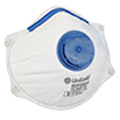
Nominal Protection Factors (NPFs) and Assigned Protection Factors (APFs) are simply a numerical rating indicating how much protection a device can offer. NPFs are derived exclusively from laboratory measurements, whilst APFs are derived from workplace measurements and represent the minimum protection factor that a trained wearer will achieve wearing the respirator in the workplace.
Unfortunately, there is a not a standard approach to using NPFs and APFs across Europe. Some countries stipulate that NPFs should be used, whilst others like the UK, France and Germany stipulate that APFs should be used. Furthermore, some countries have different APF values for the same class and type of respiratory protective device.
It is important to check and be familiar with national regulations and requirements when selecting and using RPE.
Example: Wearing RPE with an APF of 10 will reduce exposure to the wearer by at least a factor of 10 (as long as RPE is used correctly). In the simplest terms, the wearer will breathe in one-tenth or less of the amount of substance present in the air.
|
IT
DE
FR
UK
See other European APF ratings: |
|||||||
| Nominal Protection Factors and Assigned Protection Factors used in different countries | NPF | 3M Stated max. PF | APF UK | APF France | APF Germany | APF Italy | |
|---|---|---|---|---|---|---|---|
| EN149 (Filtering Facepiece) | FFP1 | 4 | 4 | 4 | 4 | 4 | 4 |
| FFP2 | 12 | 12 | 10 | 10 | 10 | 10 | |
| FFP3 | 50 | 50 | 20 | 10 | 30 | 30 | |
| EN12941 (Powered air Turbo with loose fitting headtop) | TH1 | 10 | 10 | 10 | 5 | 5 | 5 |
| TH2 | 50 | 50 | 20 | 20 | 20 | 20 | |
| TH3 | 500 | 500 | 40 | 40 | 100 | 200 | |
Occupational Exposure Limits
What is an OEL?
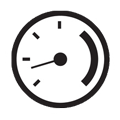
An Occupational Exposure Limit (OEL) is a predetermined upper limit on the acceptable concentration of a hazardous substance in workplace air.
OELs are normally determined by workplace sampling and reviews of historical exposures and workplace health statistics. OELs are typically set by competent national authorities and enforced by legislation.
Like APFs, OELs for any given chemical, material or class of material can vary by country. It is important to check and be familiar with national OELs when implementing a respiratory protection programme.
Technologies we offer
Use one of these links to view the products on the RS website



